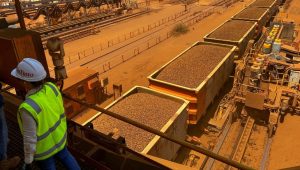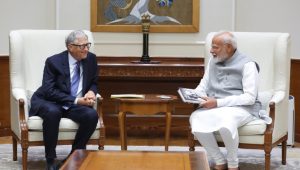Forecast by the International Monetary Fund (IMF) is a fulfilment now as India’s economy is growing faster than China’s. India has been moving in the opposite direction while many countries around the world are dealing with low growth. It’s definitely a special moment for India with so much growth prospect in front of it!
Observing India’s third-quarter GDP growth and comparing it with that of China’s in the fiscal 2014–2015, the IMF had foretold in March 2015 itself that India would surpass China’s economy and soon become the fastest growing economy in the world.
Amid the shaky period of the global economy, India held its ground. Indian rupee gained in value against the strong US dollar this year, while the currencies of Brazil, Turkey and South Africa experienced losses. The Central Statistics Office (CSO) of India numbers showed 7.5% GDP for January–March 2015 quarter. On the other hand, China had a 7% growth rate for the same period.
China has been showing a slowdown in its economy consecutively in the third and fourth quarters of fiscal 2014–2015, while India is benefited by the lower oil prices and policy reforms of its comparatively new government led by Prime Minister Narendra Modi. China is most likely to have a slow GDP growth in the coming time, which would give a huge scope to India to grow faster than China and other peer economies.
Various Sectors of the Indian Economy that Have Shown Growth
The tremendous economic growth in India has been possible due to the contribution of a number of different sectors of the Indian economy. These sectors of the economy have been showing a continuous growth that finally has led India to register itself as the ‘fastest growing economy in the world’. The new policy reforms by the Modi government have brought improved business confidence that boosted economic activities in India. The budget approved by the Union government of India is moving in the right direction containing a number of promising elements for economic growth of the country. However, the challenge remains on the practical implementation.
By emerging as a prominent sector of the Indian economy in terms of contribution to national and states’ incomes, trade flows, foreign direct investment (FDI) inflows, and employment, the Services sector has contributed hugely in India’s growth. Finance, insurance and real estate have performed strongly for quite some time now. These services have grown by 11.5%. The Manufacturing sector has shown a growth of 7.1%; services such as trade, hotels, transport and communications have experienced a growth rate of 14.1%.
India’s Finance Secretary, Rajiv Mehrishi, has talked about the greater job opportunities in India. By improvement in the Manufacturing sector’s growth, India is able to create more jobs. A positive phase has just started; way to go!
Sectors that Have Lagged Behind in Positive Growth
In the fourth quarter of 2014–2015 fiscal, the Mining and Quarrying sector’s output reduced to 2.3% as compared to a growth of 5.4% during the fourth quarter of 2013–14 fiscal. The Agriculture sector showed a 0.2% growth in fiscal 2014–15 as against 3.7% in fiscal 2013–2014. Below-average rain damaged crops which subsequently brought the growth down.
Structural reforms in India may lead to productivity gains in such sectors. Reforms in education, labour, and product markets, etc. may help in raising labour force participation and productivity for better growth prospects.
“India is a ‘bright spot’ in a ‘cloudy global horizon’. The country’s young population and progress on structural reforms would help the economy to ‘fly’ in the coming years.”
– Christine Lagarde (Managing Director, IMF)
“India has the potential to make 9–10% its new normal in the years to come.”
– Arun Jaitley (Finance Minister, India)
“I would say (the economy is) picking up. We see some signs of capital investment picking up. There is a continuing need, which the government is trying to address, of putting some of the stalled projects back on track. But we have to work (on) bottlenecks and areas where we need reforms to ensure that growth is strong and sustainable.”
– Raghuram Rajan (Governor, Reserve Bank of India)
“We believe that countries that invest in people’s education and health, improve the business environment, and create jobs through upgrades in infrastructure will emerge much stronger in the years ahead. These kinds of investments will help hundreds of millions of people lift themselves out of poverty.”
– Jim Yong Kim (President, World Bank Group)














